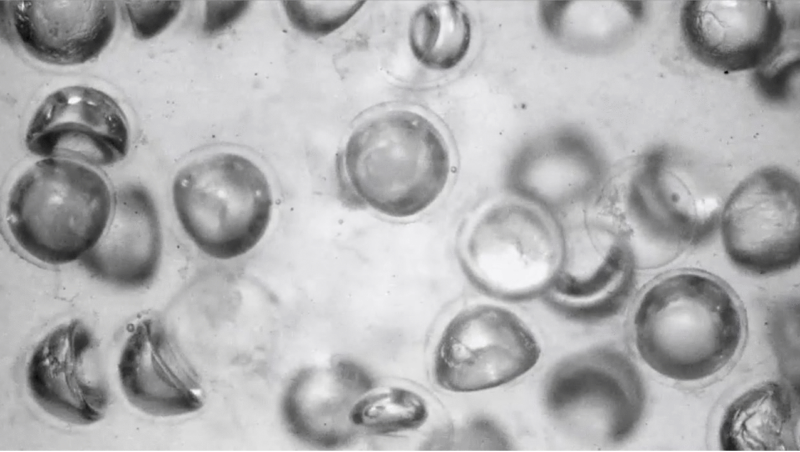U bent hier
ICT
Fragments of bird flu virus genome found in pasteurized milk, FDA says

Enlarge / Cows being milked (credit: Getty | Edwin Remsberg)
The Food and Drug Administration on Tuesday announced that genetic fragments from the highly-pathogenic avian influenza virus H5N1 have been detected in the pasteurized, commercial milk supply. However, the testing completed so far—using quantitative polymerase chain reaction (qPCR)—only detects the presence of viral genetic material and cannot tell whether the genetic material is from live and infectious viral particles or merely remnants of dead ones killed by the pasteurization process.
Testing is now ongoing to see if viable, infectious H5N1 can be identified in milk samples.
So far, the FDA still believes that the milk supply is safe. "To date, we have seen nothing that would change our assessment that the commercial milk supply is safe," the agency said in a lengthy explanation of the finding and ongoing testing.
The spam came from inside the house: How a smart TV can choke a Windows PC

Enlarge / I have hundreds of UUIDs and I must scream. (credit: Getty Images)
The modern "smart" TV asks a lot of us. In exchange for connecting you to a few streaming services you use, a TV will collect data, show ads, and serve as another vector for bad actors. In a few reported cases, though, a modern connected TV has been blamed for attacks not on privacy, eyeballs, or passwords but on an entirely different computer.
The TV in question is a Hisense TV, and the computer is a Windows PC, specifically one belonging to Priscilla Snow, a musician and audio designer in Montréal, Quebec. Her post about her Hisense experience reads like a mystery. Of course, because you already know the crime and the culprit, it's more like a Columbo episode. Either way, it's thrilling in a very specific I-can't-believe-that-fixed-it kind of thrill.
Disappearing Settings, keyboards, remote desktops, and eventually taskbarsSnow's Windows PC had "a few hiccups over the past couple of years," Snow wrote on April 19. She couldn't open display settings, for one. A MIDI keyboard interface stopped working. Task manager would start to hang until force-closed. Video capture cards had trouble connecting. As Snow notes, any veteran of a Windows computer that has had lots of stuff installed on it can mentally write off most of these things, or at least stash them away until the next reinstall.
Why canned wine can smell like rotten eggs while beer and Coke are fine

Enlarge (credit: BackyardProduction/Getty Images)
True wine aficionados might turn up their noses, but canned wines are growing in popularity, particularly among younger crowds during the summer months, when style often takes a back seat to convenience. Yet these same wines can go bad rather quickly, taking on distinctly displeasing notes of rotten eggs or dirty socks. Scientists at Cornell University conducted a study of all the relevant compounds and came up with a few helpful tips for frustrated winemakers to keep canned wines from spoiling. The researchers outlined their findings in a recent paper published in the American Journal of Enology and Viticulture.
“The current generation of wine consumers coming of age now, they want a beverage that’s portable and they can bring with them to drink at a concert or take to the pool,” said Gavin Sacks, a food chemist at Cornell. “That doesn’t really describe a cork-finished, glass-packaged wine. However, it describes a can very nicely.”
According to a 2004 article in Wine & Vines magazine, canned beer first appeared in the US in 1935, and three US wineries tried to follow suit for the next three years. Those efforts failed because it proved to be unusually challenging to produce a stable canned wine. One batch was tainted by "Fresno mold"; another batch resulted in cloudy wine within just two months; and the third batch of wine had a disastrous combination of low pH and high oxygen content, causing the wine to eat tiny holes in the cans. Nonetheless, wineries sporadically kept trying to can their product over the ensuing decades, with failed attempts in the 1950s and 1970s. United and Delta Airlines briefly had a short-lived partnership with wineries for canned wine in the early 1980s, but passengers balked at the notion.
Nestlé baby foods loaded with unhealthy sugars—but only in poorer countries

Enlarge / Night view of company logos in Nestlé Avanca Dairy Products Plant on January 21, 2019, in Avanca, Portugal. This plant produces Cerelac, Nestum, Mokambo, Pensal, Chocapic and Estrelitas, among others. (credit: Getty | Horacio Villalobos)
In high-income countries, Nestlé brand baby foods have no added sugars them, in line with recommendations from major health organizations around the world and consumer pressure. But in low- and middle-income countries, Nestlé adds sugar to those same baby products, sometimes at high levels, which could lead children to prefer sugary diets and unhealthy eating habits, according to an investigation released recently by nonprofit groups.
The investigation, conducted by Public Eye and the International Baby Food Action Network (IBFAN), says the addition of added sugars to baby foods in poorer countries, against expert recommendations, creates an "unjustifiable double standard." The groups quote Rodrigo Vianna, an epidemiologist and professor at the Department of Nutrition of the Federal University of Paraíba in Brazil, who calls added sugars in baby foods "unnecessary and highly addictive."
"Children get used to the sweet taste and start looking for more sugary foods, starting a negative cycle that increases the risk of nutrition-based disorders in adult life," Vianna told the organizations for their investigation. "These include obesity and other chronic non-communicable diseases, such as diabetes or high blood-pressure."
You can now buy a flame-throwing robot dog for under $10,000

Enlarge / The Thermonator robot flamethrower dog. (credit: Throwflame)
If you've been wondering when you'll be able to order the flame-throwing robot that Ohio-based Throwflame first announced last summer, that day has finally arrived. The Thermonator, what Throwflame bills as "the first-ever flamethrower-wielding robot dog" is now available for purchase. The price? $9,420.
Thermonator is a quadruped robot with an ARC flamethrower mounted to its back, fueled by gasoline or napalm. It features a one-hour battery, a 30-foot flame-throwing range, and Wi-Fi and Bluetooth connectivity for remote control through a smartphone.
It also includes a LIDAR sensor for mapping and obstacle avoidance, laser sighting, and first-person view (FPV) navigation through an onboard camera. The product appears to integrate a version of the Unitree Go2 robot quadruped that retails alone for $1,600 in its base configuration.
FTC bans noncompete clauses, declares vast majority unenforceable

Enlarge / Federal Trade Commission Chair Lina Khan talks with guests during an event in the Eisenhower Executive Office Building on April 03, 2024 (credit: Getty Images | Chip Somodevilla )
The Federal Trade Commission (FTC) today announced that it has issued a final rule banning noncompete clauses. The rule will render the vast majority of current noncompete clauses unenforceable, according to the agency.
"In the final rule, the Commission has determined that it is an unfair method of competition and therefore a violation of Section 5 of the FTC Act, for employers to enter into noncompetes with workers and to enforce certain noncompetes," the FTC said.
The US Chamber of Commerce said it will sue the FTC in an effort to block the rule, claiming the ban is "a blatant power grab that will undermine American businesses' ability to remain competitive."
Hackers infect users of antivirus service that delivered updates over HTTP

Enlarge (credit: Getty Images)
Hackers abused an antivirus service for five years in order to infect end users with malware. The attack worked because the service delivered updates over HTTP, a protocol vulnerable to attacks that corrupt or tamper with data as it travels over the Internet.
The unknown hackers, who may have ties to the North Korean government, pulled off this feat by performing a man-in-the-middle (MiitM) attack that replaced the genuine update with a file that installed an advanced backdoor instead, said researchers from security firm Avast today.
eScan, an AV service headquartered in India, has delivered updates over HTTP since at least 2019, Avast researchers reported. This protocol presented a valuable opportunity for installing the malware, which is tracked in security circles under the name GuptiMiner.
Microsoft’s Phi-3 shows the surprising power of small, locally run AI language models

Enlarge (credit: Getty Images)
On Tuesday, Microsoft announced a new, freely available lightweight AI language model named Phi-3-mini, which is simpler and less expensive to operate than traditional large language models (LLMs) like OpenAI's GPT-4 Turbo. Its small size is ideal for running locally, which could bring an AI model of similar capability to the free version of ChatGPT to a smartphone without needing an Internet connection to run it.
The AI field typically measures AI language model size by parameter count. Parameters are numerical values in a neural network that determine how the language model processes and generates text. They are learned during training on large datasets and essentially encode the model's knowledge into quantified form. More parameters generally allow the model to capture more nuanced and complex language-generation capabilities but also require more computational resources to train and run.
Some of the largest language models today, like Google's PaLM 2, have hundreds of billions of parameters. OpenAI's GPT-4 is rumored to have over a trillion parameters but spread over eight 220-billion parameter models in a mixture-of-experts configuration. Both models require heavy-duty data center GPUs (and supporting systems) to run properly.
Grindr users seek payouts after dating app shared HIV status with vendors

Enlarge (credit: Getty Images | Thomas Trutschel)
Grindr is facing a class action lawsuit from hundreds of users over the sharing of HIV statuses and other sensitive personal information with third-party firms.
UK law firm Austen Hays filed the claim in the High Court in London yesterday, the firm announced. The class action "alleges the misuse of private information of thousands of affected UK Grindr users, including highly sensitive information about their HIV status and latest tested date," the law firm said.
The law firm said it has signed up over 670 potential class members and "is in discussions with thousands of other individuals who are interested in joining the claim." Austen Hays said that "claimants could receive thousands in damages" from Grindr, a gay dating app, if the case is successful.
iPadOS 18 could ship with built-in Calculator app, after 14 Calculator-less years
Enlarge (credit: Apple/Andrew Cunningham)
Last year, Apple introduced the ability to set multiple timers at once in the Clock app on its various platforms.
“We truly live in an age of wonders,” deadpanned Apple’s Craig Federighi in the company’s official presentation, tacitly acknowledging the gap between the apparent simplicity of the feature and the amount of time that Apple took to implement it.
The next version of iPadOS may contain another of these "age of wonders" features, an apparently simple thing that Apple has chosen never to do for reasons that the company can't or won't explain. According to MacRumors, iPadOS 18 may finally be the update that brings a version of Apple's first-party Calculator app to the iPad.
Tiny rubber spheres used to make a programmable fluid

Enlarge / At critical pressures, the fluid's spheres become a mixture of different states. (credit: Adel Djellouli/Harvard SEAS)
Building a robot that could pick up delicate objects like eggs or blueberries without crushing them took lots of control algorithms that process feeds from advanced vision systems or sensors that emulate the human sense of touch. The other way was to take a plunge into the realm of soft robotics, which usually means a robot with limited strength and durability.
Now, a team of researchers at Harvard University published a study where they used a simple hydraulic gripper with no sensors and no control systems at all. All they needed was silicon oil and lots of tiny rubber balls. In the process, they’ve developed a metafluid with a programmable response to pressure.
Swimming rubber spheres“I did my PhD in France on making a spherical shell swim. To make it swim, we were making it collapse. It moved like a [inverted] jellyfish,” says Adel Djellouli, a researcher at Bertoldi Group, Harvard University, and the lead author of the study. “I told my boss, 'hey, what if I put this sphere in a syringe and increase the pressure?' He said it was not an interesting idea and that this wouldn’t do anything,” Djellouli claims. But a few years and a couple of rejections later, Djellouli met Benjamin Gorissen, a professor of mechanical engineering at the University of Leuven, Belgium, who shared his interests. “I could do the experiments, he could do the simulations, so we thought we could propose something together,” Djellouli says. Thus, Djellouli’s rubber sphere finally got into the syringe. And results were quite unexpected.
Recoding Voyager 1—NASA’s interstellar explorer is finally making sense again
Engineers have partially restored a 1970s-era computer on NASA's Voyager 1 spacecraft after five months of long-distance troubleshooting, building confidence that humanity's first interstellar probe can eventually resume normal operations.
Several dozen scientists and engineers gathered Saturday in a conference room at NASA's Jet Propulsion Laboratory, or connected virtually, to wait for a new signal from Voyager 1. The ground team sent a command up to Voyager 1 on Thursday to recode part of the memory of the spacecraft's Flight Data Subsystem (FDS), one of the probe's three computers.
“In the minutes leading up to when we were going to see a signal, you could have heard a pin drop in the room," said Linda Spilker, project scientist for NASA's two Voyager spacecraft at JPL. "It was quiet. People were looking very serious. They were looking at their computer screens. Each of the subsystem (engineers) had pages up that they were looking at, to watch as they would be populated."
Rumored new 4K Chromecast may fix long-standing storage issues

Enlarge / The 2020 4K Chromecast with Google TV. It comes in colors. (credit: Google)
It sounds like Google is cooking up another Google TV dongle. 9to5Google's sources say a new 4K model of the Chromecast with Google TV is in the works. It would be a sequel to the aging 2020 model that was never really fit for the job in the first place. It would also sit alongside the 2022 HD model.
The report says the new device would stay at the $50 price point and come with a new remote. A new chip would be the primary motivation for a new device. The current 4K dongle has an Amlogic S905X3 (it's just for Cortex A55 CPUs), and if Google sticks with Amlogic, a good upgrade would be the upcoming Amlogic S905X5. Besides a faster CPU and GPU, it also supports the AV1 video codec, something Google has been pushing across its ecosystem because it can cut down on what must be an incredible YouTube bandwidth bill. It has made AV1 a requirement for some new devices in order to get the YouTube app, and despite forcing it on competitors like Roku, Google's best dongle doesn't have hardware support for the codec yet. Technically the S905X5 is not official yet, so we don't have a full spec sheet, but partners have been talking about it since last year.
The No. 1 thing a new Google TV dongle needs, and has needed for years, is more storage. Google Hardware is supposed to make devices that are purpose-built for Google's software, but the 4K and HD Chromecasts with Google TV have never really been up to the task thanks to the 8GB of total device storage. Back in the early Chromecast days when these dongles ran a custom OS and only showed video streams, that was fine. These new devices run full-fat Android now, complete with a Play Store, access to millions of apps, and lots of preinstalled software. 8GB is not nearly enough.
You can now disable some of Fortnite’s most toxic emotes
-

The "Laugh it Up" emote is one of four that can now be blocked using a setting in Fortnite. [credit: Epic Games ]
For online players tired of being harassed by randos over voice chat, animated emotes have long served as a "safe" way to communicate in-game via simple, pre-approved non-verbal messages. In Fortnite, though, a few of those emotes have become so "confrontational" (as developer Epic puts it) that individual players can now choose to block them with an in-game settings toggle.
The new "See Confrontational Emotes" setting, announced Tuesday, can be set to automatically block the appearance (and associated sound effects) of four emotes "that are sometimes used in confrontational ways," Epic wrote. Those four emotes are (links go to video examples):
By default, the toggle will be set to only display these emotes from friends in an online party, Epic wrote. That setting can be changed to always allow or always block those emotes at any time.
Apple’s next product event happens on May 7, and it’s probably iPads

Enlarge (credit: Apple)
Apple is going to announce some new things on Tuesday, May 7, at 10 am Eastern, according to an invitation the company sent out to members of the press (and posted to its website) this morning.
The name Apple has given the event (“Let Loose”) doesn’t tell us much about what the company might announce, but the art does: It’s a hand holding an Apple Pencil, which almost certainly means the event will be iPad-focused.
Apple has reportedly been on the cusp of releasing new iPads since late March, and the rumor mill has already delivered most of the key details. The headliner is likely to be a pair of new iPad Pros with M3 chips, OLED displays, slightly larger screens, and refined designs. Riding shotgun will be a refreshed 10.9-inch iPad Air with an M2 chip, plus a brand-new 12.9-inch Air meant to give large-screened iPad fans an option that doesn’t cost as much as the iPad Pro.
Linux can finally run your car’s safety systems and driver-assistance features

Enlarge (credit: Getty Images)
There's a new Linux distro on the scene today, and it's a bit specialized. Its development was led by the automotive electronics supplier Elektrobit, and it's the first open source OS that complies with the automotive industry's functional safety requirements.
One of the more interesting paradigm shifts underway in the automotive industry is the move to software-defined vehicles. Cars have increasingly been controlled by electronic systems during the past few decades, but it's been piecemeal. Each added new function, like traction control, antilock braking, or a screen instead of physical gauges, required its own little black box added to the wiring loom.
There can now be more than 200 discrete controllers in a modern vehicle, all talking to each other through a CAN bus network. The idea behind the software-defined vehicle is to take a clean-sheet approach. Instead, you'll find a small number of domain controllers—what the automotive industry is choosing to call "high performance compute" platforms—each responsible for a different set of activities.
North Korea is evading sanctions by animating Max and Amazon shows

Enlarge (credit: Aurich Lawson / Getty)
For almost a decade, Nick Roy has been scanning North Korea’s tiny Internet presence, spotting new websites coming online and providing a glimpse of the Hermit Kingdoms’ digital life. However, at the end of last year, the cybersecurity researcher and DPRK blogger stumbled across something new: signs North Koreans are working on major international TV shows.
In December, Roy discovered a misconfigured cloud server on a North Korean IP address containing thousands of animation files. Included in the cache were animation cells, videos, and notes discussing the work, plus changes that needed to be made to ongoing projects. Some images appeared to be from an Amazon Prime Video superhero show and an upcoming Max (aka HBO Max) children’s anime.
The 2024 Porsche Macan EV has character, pace, and the right badge

Enlarge / The third-generation Porsche Macan drops the internal combustion engine—this one is only available as a battery electric vehicle. (credit: Porsche)
Porsche provided flights from London to Nice and accommodation so Ars could drive the Macan. Ars does not accept paid editorial content.Porsche's Taycan has been a nice electric vehicle for the German brand, and the recently updated model is supposed to offer more of the good stuff and less of the bad. The sedan is on the expensive side, and it doesn't scream "family lugger," which is where the new electric Macan comes in. Porsche's volume-selling entry-level SUV is now electric, and it might be just the car to convince skeptics and non-Porsche people alike that EV is the way to go. Maybe.
At launch, you'll be able to pick up a Macan 4 or Macan Turbo. Peak power sits at 402 hp (300 k) and 630 hp (470 kW) respectively, but that's just when you use the car's overboost. Most of the time, you'll have to make do with an adequate 382 hp (285 kW) and 576 hp (430 kW). Torque for both is a healthy 479 lb-ft (650 Nm) and 833 lb-ft (1,130 Nm). With all that grunt on board, Porsche reckons you'll be able to hit 62 mph from rest in 4.9 and 3.1 seconds, respectively (0–100 km/h takes 5.2 and 3.3 seconds, respectively), as well as topping out at 137 mph (220 km/h) and 162 mph (260 km/h). Not having a gas motor under the hood isn't a penalty when it comes to performance.
The electric Macan sits on the all-new PPE (Premium Platform Electric) architecture. Shared with Audi and its upcoming Q6 e-tron, PPE was built with electricity in mind. Its party piece is a hefty 100 kWh battery (95 kWh usable) that sits under the cabin, giving the Macan 4 381 miles (613 km) of range and the Turbo 367 miles (590 km), although that's according to the less-accurate WLTP testing scheme used in Europe—EPA range estimates will be available closer to the Macan's arrival in the US in the second half of this year.
Daily Telescope: The ambiguously galactic duo

Enlarge / This image from the NASA/ESA Hubble Space Telescope features NGC 3783, a bright barred spiral galaxy about 130 million light-years from Earth. (credit: ESA/Hubble & NASA, M. C. Bentz, D. J. V. Rosario)
Welcome to the Daily Telescope. There is a little too much darkness in this world and not enough light, a little too much pseudoscience and not enough science. We'll let other publications offer you a daily horoscope. At Ars Technica, we're going to take a different route, finding inspiration from very real images of a universe that is filled with stars and wonder.
Good morning. It's April 23, and today's photo comes from the Hubble Space Telescope. It features a lovely, barred spiral galaxy and a photobombing star on the right-hand side of the image.
The galaxy is NGC 3783, which can be found 130 million light years away from Earth. Astronomical distances are all mind-boggling, but to try and put things into perspective, that means this galaxy is about 1,000 times the distance further from us compared to the diameter of our own Milky Way Galaxy. So it's far, far away.
Concern grows as bird flu spreads further in US cows: 32 herds in 8 states

Enlarge / Greylag geese sit on a field and rest while a cow passes by in the background. (credit: Getty | Daniel Bockwoldt)
Researchers around the world are growing more uneasy with the spread of highly pathogenic avian influenza (H5N1) in US dairy cows as the virus continues to make its way into new herds and states. Several experts say the US is not sharing enough information from the federal investigation into the unexpected and growing outbreak, including genetic information from isolated viruses.
To date, the US Department of Agriculture has tallied 32 affected herds in eight states: Idaho, Kansas, Michigan, New Mexico, North Carolina, Ohio, South Dakota, and Texas. In some cases, the movement of cattle between herds can explain the spread of the virus. But the USDA has not publicly clarified if all the herds are linked in a single outbreak chain or if there is evidence that the virus has spilled over to cows multiple times. Early infections in Texas were linked to dead wild birds (pigeons, blackbirds, and grackles) found on dairy farms. But the USDA reportedly indicated to Stat News that the infections do not appear to be all linked to the Texas cases.
Spread of the virus via cattle movements indicates that there is cow-to-cow transmission occurring, the USDA said. But it's unclear how the virus is spreading between cows. Given that even the most symptomatic cows show few respiratory symptoms, the USDA speculates that the most likely way it is spreading is via contaminated milking equipment.







































































































![Reference manager - [Onderhoud aantekeningen]](http://labyrinth.rienkjonker.nl/sites/default/files/styles/medium/public/Reference%20manager%20v3%20-%20%5BOnderhoud%20aantekeningen%5D%2014-2-2010%20102617_0.jpg?itok=OJkkWhxY)
![Reference manager - [Onderhoud aantekeningen]](http://labyrinth.rienkjonker.nl/sites/default/files/styles/medium/public/Reference%20manager%20v3%20-%20%5BOnderhoud%20aantekeningen%5D%2014-2-2010%20102628.jpg?itok=CUvhRRr7)
![Reference manager - [Onderhoud bronnen] - Opnemen en onderhouden](http://labyrinth.rienkjonker.nl/sites/default/files/styles/medium/public/Reference%20manager%20v3%20-%20%5BOnderhoud%20bronnen%5D%2014-2-2010%20102418.jpg?itok=d7rnOhhK)
![Reference manager - [Onderhoud bronnen]](http://labyrinth.rienkjonker.nl/sites/default/files/styles/medium/public/Reference%20manager%20v3%20-%20%5BOnderhoud%20bronnen%5D%2014-2-2010%20102433.jpg?itok=CgS8R6cS)
![Reference manager - [Onderhoud bronnen]](http://labyrinth.rienkjonker.nl/sites/default/files/styles/medium/public/Reference%20manager%20v3%20-%20%5BOnderhoud%20bronnen%5D%2014-2-2010%20102445_0.jpg?itok=4oJ07yFZ)
![Reference manager - [Onderhoud bronnen]](http://labyrinth.rienkjonker.nl/sites/default/files/styles/medium/public/Reference%20manager%20v3%20-%20%5BOnderhoud%20bronnen%5D%2014-2-2010%20102500.jpg?itok=ExHJRjAO)
![Reference manager - [Onderhoud bronnen]](http://labyrinth.rienkjonker.nl/sites/default/files/styles/medium/public/Reference%20manager%20v3%20-%20%5BOnderhoud%20bronnen%5D%2014-2-2010%20102524.jpg?itok=IeHaYl_M)
![Reference manager - [Onderhoud bronnen]](http://labyrinth.rienkjonker.nl/sites/default/files/styles/medium/public/Reference%20manager%20v3%20-%20%5BOnderhoud%20bronnen%5D%2014-2-2010%20102534.jpg?itok=cdKP4u3I)
![Reference manager - [Onderhoud thema's en rubrieken]](http://labyrinth.rienkjonker.nl/sites/default/files/styles/medium/public/Reference%20manager%20v3%20-%20%5BOnderhoud%20themas%20en%20rubrieken%5D%2020-9-2009%20185626.jpg?itok=zM5uJ2Sf)













![Reference manager - [Raadplegen aantekeningen]](http://labyrinth.rienkjonker.nl/sites/default/files/styles/medium/public/Reference%20manager%20v3%20-%20%5BRaadplegen%20aantekeningen%5D%2020-9-2009%20185612.jpg?itok=RnX2qguF)
![Reference manager - [Relatie termen (thesaurus)]](http://labyrinth.rienkjonker.nl/sites/default/files/styles/medium/public/Reference%20manager%20v3%20-%20%5BRelatie%20termen%20%28thesaurus%29%5D%2014-2-2010%20102751.jpg?itok=SmxubGMD)
![Reference manager - [Thesaurus raadplegen]](http://labyrinth.rienkjonker.nl/sites/default/files/styles/medium/public/Reference%20manager%20v3%20-%20%5BThesaurus%20raadplegen%5D%2014-2-2010%20102732.jpg?itok=FWvNcckL)
![Reference manager - [Zoek thema en rubrieken]](http://labyrinth.rienkjonker.nl/sites/default/files/styles/medium/public/Reference%20manager%20v3%20-%20%5BZoek%20thema%20en%20rubrieken%5D%2020-9-2009%20185546.jpg?itok=6sUOZbvL)
![Reference manager - [Onderhoud rubrieken]](http://labyrinth.rienkjonker.nl/sites/default/files/styles/medium/public/Reference%20manager%20v3%2020-9-2009%20185634.jpg?itok=oZ8RFfVI)

![Reference manager - [Onderhoud aantekeningen]](http://labyrinth.rienkjonker.nl/sites/default/files/styles/medium/public/Reference%20manager%20v3%20-%20%5BOnderhoud%20aantekeningen%5D%2014-2-2010%20102603.jpg?itok=XMMJmuWz)


































































